
A route to economic growth – The Belt and Road Initiative 2018 survey
To mark the fifth anniversary of the Belt and Road Initiative (BRI), the IFF – in collaboration with Central Banking – conducted its inaugural Belt and Road Survey of central banks

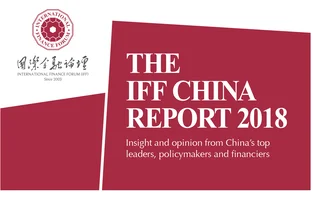
China’s Belt and Road Initiative (BRI) has the potential to be the largest development project in modern history. In terms of its scope and scale, there can be little doubt.
China’s signature BRI has already signed up 71 jurisdictions, representing a combined population of around 3.5 billion, and hundreds of billions of dollars of investment have already been made in projects such as the Port of Piraeus in Greece, the Suez Canal in Egypt, a new high-speed railway in Thailand, the China–Belarus Industrial Park, the Yamal LNG project in Russia, upgrading the Serbian railway system in Belgrade and the development of Gwadar – a brand-new container port – in Pakistan and 1,800 miles of superhighway and high-speed railway to connect China’s landlocked western provinces.
The BRI is not targeted as official development aid. It is a development strategy proposed by China focusing on connectivity and co-operation. Funding is expected to yield monetary returns and there will be economic consequences if projects fail to deliver on their expected returns. The sheer scale of the initiative also raises some challenges. Some are operational challenges – how capable are countries in terms of engaging into the BRI? What are the available sources of funding? What risks do they raise? Other issues are related to geopolitics. Could the China-led effort aimed at boosting economic development – in part by learning from China’s own lessons from its economic development, as well as benefiting from its capital – spark tensions with the European Union, the US, Russia, Japan and India?
The International Finance Forum asked Central Banking Publications to survey central banks of countries participating in the BRI to gain their insight into the current state of the initiative and the challenges and opportunities it faces in the years ahead. Central banks were polled as they are key advisers to most governments on economic and financial matters, have technical competency – even in developing countries – and are often charged with financial stability in addition to being stewards of monetary policy. About one-quarter of BRI central banks have also arranged currency swap agreements with the People’s Bank of China.
This article reports the findings of the survey, which was carried out in January and February 2018. The work has only been possible with the support and co-operation of the central bankers who agreed to take part. They did so on the condition that neither their names nor those of their central banks would be mentioned in this report.
Key findings
- Just under half of central banks described the BRI as a ‘once-in-a-generation’ initiative.
- Half of respondents said the BRI ranks above national development bank programmes in terms of importance; 21% ranked it above International Monetary Fund (IMF)/World Bank efforts; and 14% above regional development bank projects.
- Nearly three-quarters of those surveyed said the BRI has not yet resulted in greater investment from China than already expected.
- However, 92% of respondents expect the BRI to bolster domestic growth during the next five years, with 67% saying it will be greater than 0 and up to 1.5 percentage points, and 25% saying greater than 1.5 and up to 5.5 percentage points.
- Most funding is expected for major and mega infrastructure projects rather than smaller projects.
- Funding is expected to come from Chinese development banks, China-led and other multilateral institutions – financial centres scored poorly, with London (33%) ranking highest.
- Domestic currency (32%) and the euro (29%) are the most favourable funding currencies; respondents ranked renminbi and US dollar funding at the same preferred level (19%).
- Sixty-three per cent of respondents said they “actively support” or “support” expanding the capital of the Asian Infrastructure Investment Bank (AIIB) and the New Development Bank (NDB) with reserve currencies; 60% favoured domestic currency expansion – central banks unanimously rejected the use of reserves and sovereign wealth fund (SWF) capital for BRI projects.
- There was overwhelming support for sound ethical standards and transparency in BRI projects.
- Thirty-five per cent of respondents said the BRI is evolving from an initiative to a regional/international co-operation mechanism; 35% called for the BRI to be more specific with standards; 29% called for it to be more transparent and relevant institutional mechanisms to be improved – European central banks believe the BRI will contribute to green finance, while most other central banks view it as “not relevant”.
- Legal framework, financing and the government sector were stated as being the largest obstacles to development.
- Policy and political risks are viewed as the two greatest barriers to the BRI.
- The BRI is expected to create the greatest friction with the EU (42%) and the US (33%). There was little concern about increased strain in relations with Russia, Japan or India.
- The BRI poses the biggest risks for domestic funding capabilities (36%), followed by monetary policy (27%) and financial stability (18%).
- Most central banks are not actively advising on the BRI to their governments or official development bodies – but the majority that are advising their governments on this initiative also have direct dealings with China.
- Engagement in the BRI is still patchy – most central banks said their countries have yet to draw up BRI plans.
Profile of respondents
Central Banking received responses from 26 central banks in countries participating in the Belt and Road Initiative. Over half of respondents were European, while Asian respondents made up just under one-quarter of the replies. Central banks from the Middle East and Oceania also featured. Transition economies played a significant role in this survey, contributing 46% of responses. Emerging markets and developing economies made up 19% of the total, while 15% of central banks were from industrial economies.
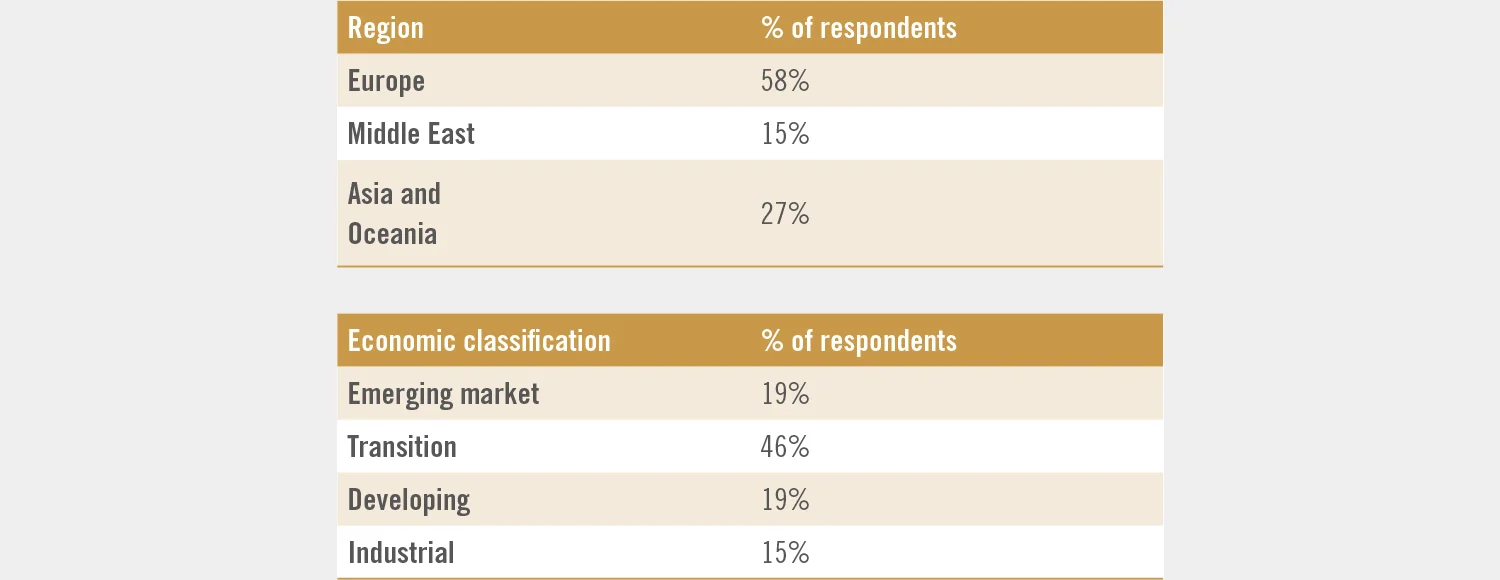
Survey responses
1. Does your central bank actively advise your government and/or state development bodies on the BRI?
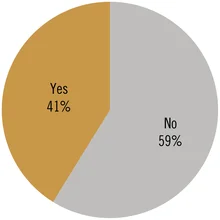
The majority of central banks’ respondents in BRI-participating countries surveyed said they are not playing an active role in advising the government or state development bodies about China’s signature development initiative. Given that much of the work of central banks is related to monetary policy, financial stability, currency and payments, and market infrastructure developments, it is perhaps not surprising that central banks are not yet playing a major role. Nonetheless, as many are financial and economic advisers to governments, it is noteworthy that so few view themselves as “active” in the area, five years after the unveiling of the BRI. This is by no means the case for all. One European central bank noted that it “acts in close co-operation with its government in connection with the BRI” while a major Asian central bank added: “We regularly provide outlooks to our government on this issue.”
Others are engaged because of their involvement with multilateral bodies – particularly the World Bank, the European Bank for Reconstruction and Development (EBRD), the Asian Development Bank (ADB) and the China-led AIIB. At this stage, central bank governors are far less likely to be substituted for finance ministers on the AIIB board than on the boards of the Bretton Woods multilateral institutions and established regional development banks.
Some central banks are actively involved in tackling financial issues associated with the BRI. One respondent from a central and eastern European (CEE) central bank said: “The bank has been internally consulted on the main strategic guidelines of the BRI, especially the ones dealing with financial issues and financial system development.”
1a. If yes, does your central bank also engage with China on the BRI?
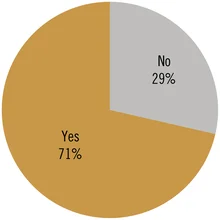
It is noteworthy that more than 70% of central banks that viewed themselves as actively advising their governments and/or state development bodies were also engaging directly with China on the BRI.
One major central Asian central bank said that it “takes part in discussions concerning interbanking co-operation”. A Southeast Asian central bank explained that it “always supports [its] government’s co-operation with China under the framework of the BRI”, and other efforts. A European central bank added that “several initiatives have already been launched in the framework of the BRI” and it is expected “to further develop its relations with countries participating in the BRI”, while another pointed to the importance of its currency swap agreement with the People’s Bank of China to facilitate “commercial trade between the two countries”, although this is not “formally part of the BRI”.
2. How important is the BRI to your country?
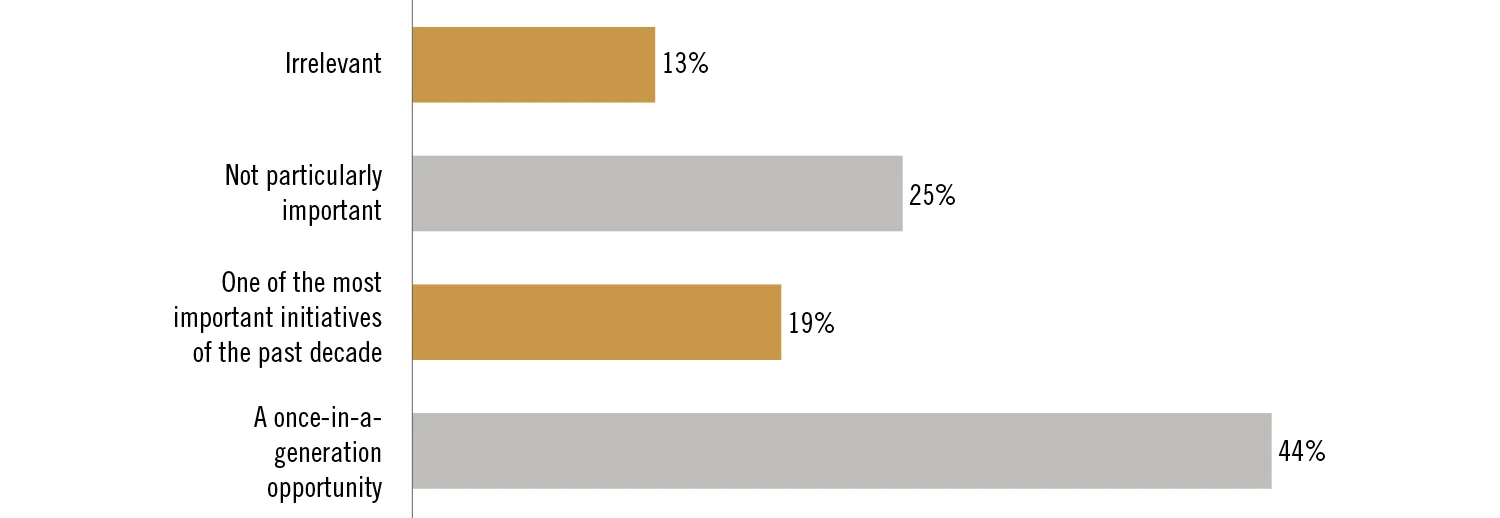
Just under half of central banks viewed the BRI as a once-in-a-
generation opportunity, with another 20% ranking it as one of the most important in the past decade. This supports assertions that the BRI represents a major opportunity to advance transport, logistics and other infrastructure in developing countries, as well as to increase the velocity of trade and services for all countries involved.
“We support the BRI as it is expected to facilitate the flow of trade between our country and Asian countries, particularly China,” said one Middle East-based central bank. “In addition, the initiative enables us to access new financing sources and boost investment in infrastructure projects.”
“The BRI can significantly improve connectivity within Southeast Asia and beyond. The infrastructure networks connecting Asia with Europe and Africa, along with the project’s routes, will induce closer and larger economic, social and cultural ties between China and its trading partners,” added a central bank from a middle-income Asian nation.
One major central bank asserted that the BRI represents an “opportunity to increase bilateral investments”, while others felt the BRI could promote development within their nation in terms of technological and social advancement. “The results of the initiative should be mostly obvious in building technological capacities, development of skills and the creation of new jobs – especially for the youth and female population. It should result in a long-term growth model, based on trading, exchange and, primarily, the activities of small and medium-sized enterprises,” said the central bank of a former Soviet Bloc nation.
One CEE central bank believes the BRI “could potentially be very important, if implemented and utilised actively”.
3. How does your central bank categorise the importance of the BRI at a national level?

Half of central bank respondents ranked the BRI as “more significant than national development bank programmes for new initiatives”, although just 14% said they viewed the BRI as “more significant than domestic government programmes for new initiatives”.
Perhaps surprisingly, 35% of respondents ranked the BRI as more significant at a national level than IMF/World Bank (21%) and regional development body (14%) programmes. “The BRI is able to promote win-win co-operation among the participating countries. The technological and financial involvement of the East can be decisive for the further development of Europe,” responded one CEE central bank.
Many central banks said they found it hard to rank the BRI against existing multilateral and domestic development efforts, in some cases because these efforts are viewed as complementary. “The BRI and the programmes offered by the organisations mentioned… are different both in objectives and practices and cannot be compared directly,” said one mid-sized Asian central bank.
A European central bank added: “It is very difficult to point out to what extent the BRI is more or less important … but it is certainly very much connected to all other international and domestic relations. We have a very specific position, and our economy is very much dependent on foreign direct investments. In that context it has to be highlighted that relations with the IMF… are very important, as well as the World Bank programmes. On the other hand, the involvement of the EBRD and other such institutions in the financial market is of the utmost importance for the further development of the economic conditions in our country. In our view, the BRI is accompanying these other factors.”
Some central banks believed the scope of the question needed to refer, in a broader sense, to more than just public money.
4. Has the BRI resulted in greater investment in your country compared with what was already expected from China?

Nearly three-quarters of respondents stated that the BRI has not resulted in more Chinese investment in their country than was already expected. Most central banks asserted that Chinese investment that has taken place would have occurred irrespective of the BRI. There were some exceptions, however.
One mid-sized central bank discussed the development of ports by public sector Chinese companies. Another central bank from central and eastern Europe foresaw investment in the future: “We expect far more projects in railways and road-building, housing, energy, mining and other sectors in the coming years, which would be a direct result of this initiative.”
“We already have a close trade and investment tie with China,” said one Asian central bank. “The BRI may further help secure the financial support needed from the China-led development banks to upgrade our infrastructure facilities and improve connectivity with other Asian countries.”
One mid-sized central bank pointed to a major project that will target logistics and help develop high-value manufacturing, modern services and a knowledge-based society. “We aim to focus on linking innovative economies and supply chains across the region, which would be complemented by the BRI,” it said.
5. What is the expected boost to GDP from BRI-related projects over the next five years?

China says it is keen to export its growth model to developing countries, and believes that enhanced connections of all forms will help to uplift economic growth for all parties engaged in the BRI.
A total of 92% of central bank respondents expect the BRI to bolster their domestic growth during the next five years, with the majority saying this would be greater than 0 and up to 1.5 percentage points although 25% were more bullish, predicting a fillip to growth of more than 1.5 and up to 5.5 percentage points. Such growth levels would reflect favourably on the growth China itself has enjoyed during the past four decades.
“Countries like ours have a chance to use the funds and agreements with the Chinese government and Chinese companies… to influence infrastructure development to be better connected to the region and world trading routes,” explained a CEE central bank. “In this way, better conditions would be formed for foreign direct investment and economic development. With this in mind, the government [agreed to give] full support to this new ‘Chinese economic philosophy’ and its guiding principles in financing the development of the countries along the ancient Silk Route. The BRI will certainly have a positive effect on our GDP in the next five years, but it is hard to calculate the extent of it.”
“The expected boost depends not only on engagement but also on the external opportunities,” added another CEE central bank. “The projects are in the initial phase and involve a number of institutions and decision-making bodies. For the time being, the impact on GDP can be estimated in a wide range. However, the initiative is expected to further boost economic growth.”
Other central banks found it hard to estimate the overall impact. A Southeast Asian central bank, for example, explained how its own new economic strategy would be the main contributor to future growth. “Our assumption is that the BRI would induce investment as a supplement to [our own economic strategy], thus, its contribution to our GDP is expected to be quite slim,” it explained. “That said, direct contribution may be small but [the] indirect crowding-in effect could be large.”
A number of central banks chose not to make a prediction. “It is virtually impossible to answer, as there are no necessary and stable inputs,” said one European central bank. “It might not affect our economy,” added another, located in the Middle East. “Based on currently available information, publicly disclosed projects will affect the country only indirectly, thus they will have only a marginal impact in terms of GDP,” said another.
6. In your country, which types of projects will receive the greatest funding support from the BRI?

The Chinese authorities are keen to stress that BRI projects are not necessarily focused on major infrastructure developments, but rather the entire ecosystem, including small and
medium-sized enterprises and the financially excluded. This focus has yet to materialise in the thinking of central banks in BRI countries.
Major infrastructure (railways, roads, highways, factories and agricultural water conservancy works) and mega infrastructure (power stations, the power grid, high-speed rail networks, urban underground networks and rail transit) were the two types of investments viewed as most likely to secure the greatest funding from BRI, according to central banks surveyed. A total of 55% of central banks ranked major infrastructure projects as the most likely to secure BRI funding, with 36% ranking mega infrastructure as most likely. The percentages for second-ranked votes were 44% for major infrastructure, and 22% for mega infrastructure.
“We anticipate we will be a connecting logistic hub for the whole Association of Southeast Asian Nations region,” said one Southeast Asian central bank. “Having said that, infrastructure and construction projects are at the forefront of receiving funding support from the BRI.”
These sentiments were echoed by a small European central bank. “Road and general infrastructure projects would probably constitute the main contributions. Some intra-regional and other types of supporting infrastructures could develop as well,” they added.
Another European central bank said its response was based on “observed interest of Chinese investors in transport infrastructure and power plants projects”.
“Up to now there was no interest in the projects that fall into the remaining three categories of medium-sized development projects, small and medium-sized enterprises and financial excluded sectors, and could be qualified as part of the BRI. However, there are also other Chinese investments that we do not consider part of BRI,” the central bank said.
7. Where does your central bank expect most BRI funding for these projects to come from?
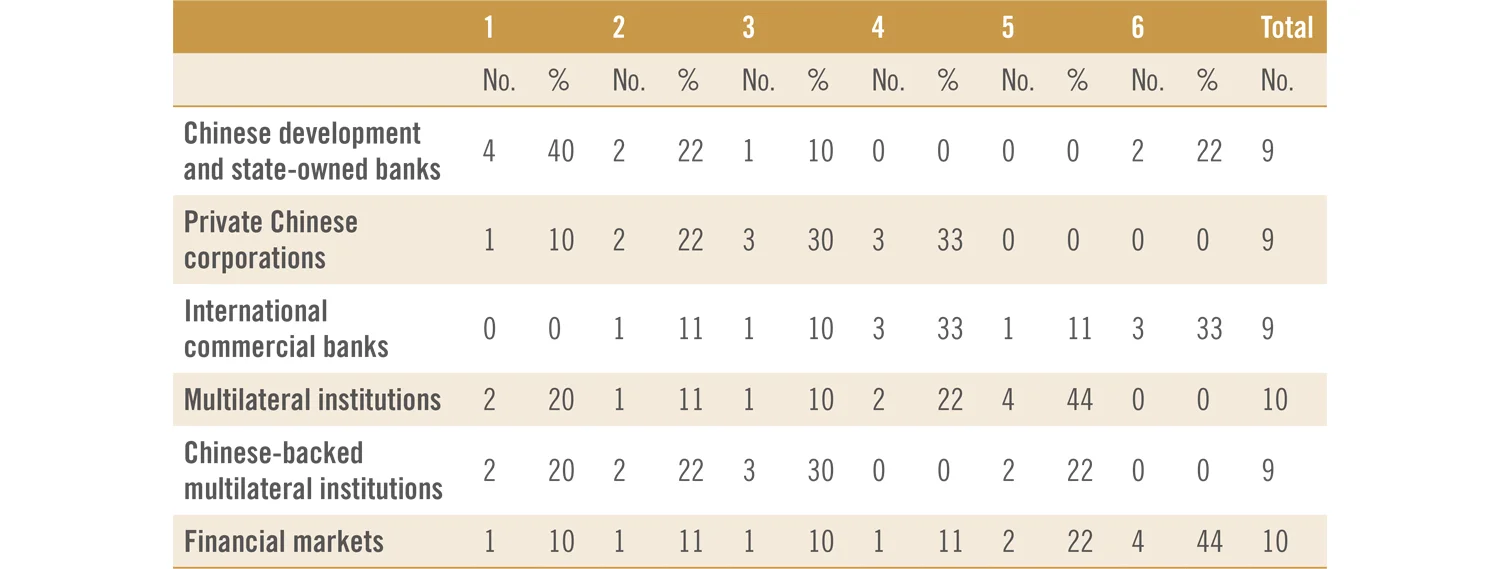
The most significant source of funding
for BRI projects was expected to come from Chinese development and state-owned banks, said 40% of central banks in their first choices and 22% in their second. Chinese-backed multilateral institutions (20% of first choices and 22% of second choices) and, to a lesser extent, other multilateral institutions (10% of first choices and 20% of second choices) also scored highly. Meanwhile, private sector Chinese corporations (10% of first choices and 22% of second choices) are expected to play another important but smaller role. International commercial banks and financial markets are expected to play a minor role, despite Chinese efforts to utilise private capital.
“It is expected that funding for BRI projects would come primarily from Chinese development and state-owned banks and, in some part, from private Chinese corporations and Chinese-backed multilateral institutions,” said one ‘16+1’ group central bank, summing up the views of many institutions.
Some central banks said it is still too early to determine the source of funding for BRI projects. “Talks with Chinese investors on possible investments in major infrastructure projects are still at an early stage and that is why we cannot precisely rank the possible sources of funding,” said a CEE central bank.
A small number of central banks alluded to involvement from European institutions. “Eurozone, EU-based markets and banks in general”, will be the primary source of funding, according to one central bank, while another suggested “adding the European Investment Bank to the list of multilateral institutions” – a list that includes the World Bank, the EBRD and the ADB.
One major central bank explained how initial public offerings in Chinese financial markets are “regularly discussed” with the People’s Bank of China, but “the projects have not been implemented yet”.
7a. If funding for BRI projects comes from financial markets, which financial markets?

Financial markets are not expected to play a major role in funding BRI projects for the time being, despite vast sums of pension and insurance money seeking higher returns than are currently available from many current market instruments. London was ranked as the top centre for market-based funding, followed by Hong Kong and mainland China. One European central bank explained: “Given prevailing current trends, the funding might probably be expected to come from Hong Kong-based markets.”
8. What currency should be used for financing BRI-related projects?
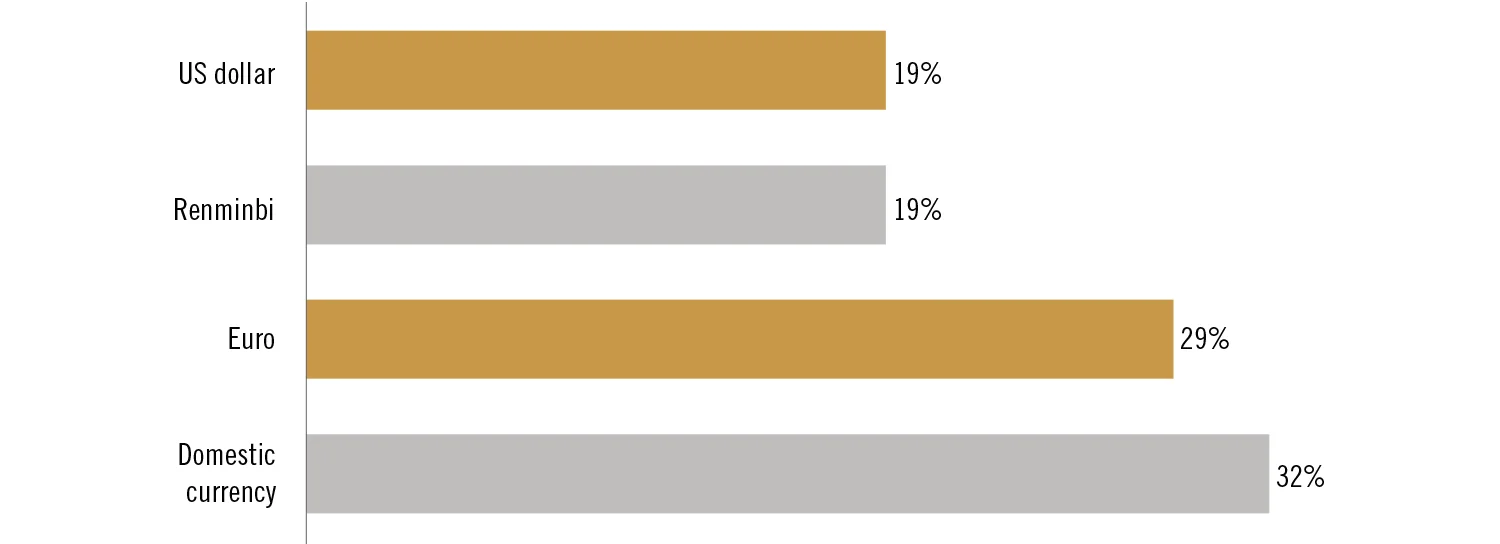
Unsurprisingly, many central banks would prefer BRI financing to take place in domestic currencies (32%), where there is no foreign exchange risk. But a large number of central banks also favour the use of the euro (29%).
“Domestic currency would be preferable in order to minimise potential negative impacts on economic and financial stability,” said one central and eastern Europe-based central bank. “However, local financial markets remain rather shallow, and excessive reliance on them might crowd out domestic investment projects. A combination of both euro – given our increasing EU integration trends – and [domestic] currency might offer the best combination.”
A eurozone central bank added: “The euro serves as the one and only official currency, so from a financial stability point of view, it is preferable to eliminate forex risk, unless an effective/efficient hedge is made, and/or it can strongly be concluded that benefits of non-euro funding outweigh its costs.”
Encouraging for those that see a greater international role for the renminbi is that the same proportion (one-fifth) of respondents favoured use of renminbi for BRI projects as those that preferred the US dollar.
“Our country is committed to strengthening financial and economic relations with China through renminbi-related agreements and initiatives,” said one mid-sized central bank.
“The central bank is promoting regional currency usage,” added a mid-size Asian central bank. “Regarding the promotion of renminbi usage, we have designated one of the Chinese banks as a clearing bank to deal with renminbi transactions… In addition, we have swap arrangements between the central bank and the People’s Bank of China, which serves as backstop liquidity as it allows both central banks to access the local currency of the other party. This has bolstered confidence of the private sector as well as financial institutions on the availability of local currency for cross-border investment settlements.”
Another central bank that has a bilateral swap with the People’s Bank of China said the “best solution” would be for Chinese investments to be conducted by a “direct conversion from renminbi to our [domestic] currency” and “for all project activities” to be conducted in “domestic currency”. “However, BRI projects are very important for stimulating economic growth, even if they are conducted through funding in hard currencies such as the US dollar or euro.”
Another Asian central bank was impartial, stating the choice of currency should be determined “by the relevant decision-makers”.
9. What is your central bank’s position on expanding the capital in the NDB and AIIB with reserve currencies and/or your nation’s own currency?
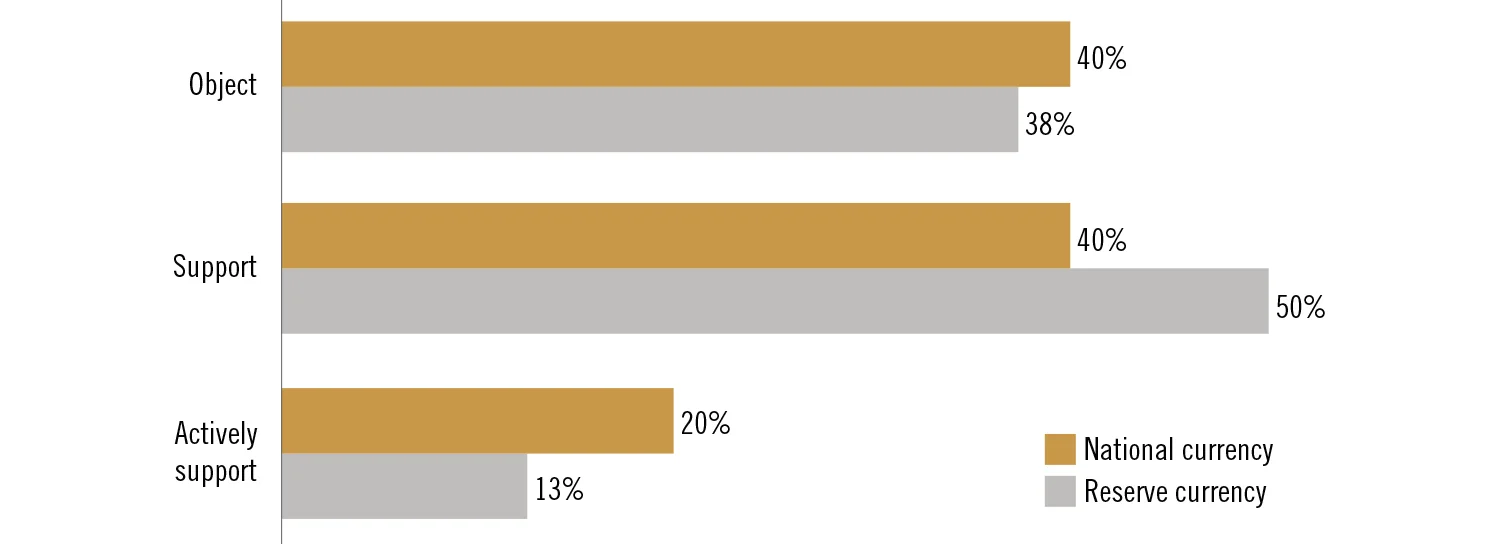
Many central banks that participated in the survey did not express a view about funding for the new China-led multilateral development institutions, the NDB – or the Brics (Brazil, Russia, India, China and South Africa) bank – and the AIIB. The NDB is currently seeking to expand membership beyond its five founders.
“As we are not a member of any of the stated banks, we do not have a specific position on this issue,” said one mid-sized institution. One bigger central bank added: “The central bank’s involvement in the AIIB is somewhat limited as such matters fall within the responsibilities of the ministry of finance and involve the use of fiscal resources.”
Nonetheless, a total of 63% central banks responded by saying they “actively support” or “support” expanding the NDB and AIIB’s capital with reserve currencies, while 38% objected. Further, 60% of respondents favoured expanding capital in national currencies, while 40% objected.
“The central bank supports the capital increase in the NDB and AIIB to strengthen the role of institutions in financing the projects of the BRI,” said an Asian central bank.
But not all institutions favoured additional capital raising. “Our answers concern only the AIIB as we are not a member of the NDB. The AIIB seems to be well capitalised at the moment,” said one European central bank. Another stated: “The current economic conditions and fiscal position constrain us from expanding our share in the NDB.”
9a. Should central bank forex reserves and sovereign wealth be used to invest in BRI infrastructure strategies?

Although the challenging yield environment in traditional reserve currency assets is making it difficult for central banks to earn a profit on their foreign exchange reserves, central banks that responded unanimously rejected the idea of using reserves and sovereign wealth assets in BRI infrastructure projects – despite the Hong Kong Monetary Authority unveiling plans to invest US$1 billion in International Finance Corporation infrastructure projects last year.
“The role and function of central banks’ forex reserves and SWF should not be changed,” said one mid-size central bank.
“The purpose of international reserves is primarily to ensure a country’s international liquidity. Therefore, we believe that – in line with the principles of liquidity and safety – the decision on the investment of the international reserve funds should not be bound to any specific project, but determined by the securities’ credit rating,” added another, echoing the thoughts of many central banks.
Indeed, this was the view even in countries that have SWFs or whose central bank reserves are viewed as being sufficiently large that they can invest in less liquid financial instruments.
10. How important are ethical standards and transparency in the development of the BRI?

Central banks overwhelmingly support the practice of sound ethical standards and transparency for BRI projects, with 89% of participants describing it as “very important”. Just 11% said ethical standards and transparency are “important, but not essential”, and no central bank viewed them as “not very important” or “irrelevant”.
A Eurasian central bank said: “Ethical standards and transparency are essential and very important principles for us”; while an Asia-Pacific central bank added: “Ethical standards and transparency are equally important for developments outside the BRI.”
A small European central bank also highlighted the benefits of transparency: “It should always be the case with major infrastructure projects so that benefits and cost associated with it are clear to all market agents.”
11. Which best describes your central bank’s view of the development of the BRI?

A total of 35% of respondents say they view the BRI as “developing from an initiative to regional or international co-operation mechanism”, with one Asian central bank stating: “Regional financial connectivity has long been a key driver behind the flourishing economic ties between ourselves and countries in the region”.
However, 35% felt the initiative needs to be more specific and that standards need to be created to ensure the successful implementation of projects; while 30% say the BRI needs to be more transparent and the institutional mechanisms need to be improved.
11a. Do you believe the BRI will contribute to green finance?
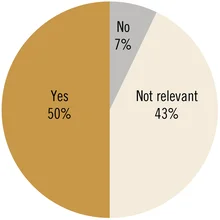
There was a split between European central banks – particularly those with close ties to the EU – and other central banks when it came to views on the BRI contributing to green finance. Half of those that voted said they thought the BRI would boost green finance – many of them European. “We believe that the projects under the BRI will be implemented in accordance with key international agreements regarding climate change and emerging tendencies in financing infrastructure,” said a respondent from a medium-to-large-sized EU central bank.
“It is very important that all future projects within the BRI have a focus on green financing as environmental preservation and the appropriate usage of natural resources become more and more important,” added a central bank based in the Balkans region.
“Our country is committed to environmental protection and believes that green funding can play an increasingly important role in securing sustainable economic growth and long-term investments,” said another European central bank.
China has received criticism from some of the backers of Bretton Woods institutions for its financing of higher-polluting, coal-fired power stations in countries such as Pakistan. Bankers in the south Asian nation – which produces its own coal and has to import gas – believes it would have struggled to fund new coal-fired stations from sources other than China. This may explain why 43% of respondents – particularly those in Asia – viewed green financing as “not relevant” to the BRI.
However, attitudes may be changing. One small central bank reported: “Investments in the power plants based on renewable energy sources could contribute to green finance.” Another added: “China is putting green finance at the centre of its development plans. The BRI could be used as a platform for the delivery of green finance, [enabling a] greater amount of finance for construction of non-hydrocarbon energy-generating facilities.”
12. What is causing the biggest roadblock to the development of BRI projects in your country?

The biggest blockage to the development of BRI projects are the legal framework, financing, the government sector and credit ratings. A total of 45% of survey respondents ranked the legal framework as the most significant roadblock when facing the development of BRI projects, with 36% citing financing. Furthermore, 44% of second-placed votes went to the government sector, and 9% of first-ranked and 33% of second-ranked concerns were related to credit rating.
Many legal challenges are related to compliance commitments to rules that are part of being a member of an existing trading bloc. “Most impediments arise from legal rules – which originate in the EU legal framework,” explained one European central bank.
An Asian central bank said that despite attempts to “streamline regulations”, “foreign contractors participating in the projects may still be subject to regulatory burdens”.
One central bank referred to the high costs related to Chinese funding. “The biggest roadblock to developing BRI projects is expensive financing from China, including the insurance of funding costs,” said a CEE central bank. “Adjustment in this area would provide far more BRI projects.”
13. What is the greatest policy barrier related to the BRI?

Respondents voted policy risks (18% of first-ranked votes and 45% of second-ranked) and political risks (36% of first-ranked votes and 9% of second-ranked) as the greatest barriers to the BRI. “We are in a very specific position,” said one mid-sized BRI country central bank. “We are based in a country that has had many political tensions in the past and many different foreign influences, so the biggest risk to development is a political risk coming from different international forums.”
Some parties also highlighted a lack of clarity around the BRI. “Stakeholders are uncertain about the policy implementation plan,” said one Asian central bank.
Many more central banks were worried about exchange rate fluctuations (27% of first-placed votes) and others expressed concerns over investment risks (9% of first-placed votes and 45% of second-placed).
A small European central bank worried that forex inflows “might engender exchange rate volatility and induce economic and financial stability shocks”. Forex volatility was also cited by a Group of 20 central bank: “Some participants of investment projects under the BRI pointed out the importance of hedging risk of exchange rate fluctuation.”
14. Is your central bank concerned the BRI may create friction with any of its strategic partners?
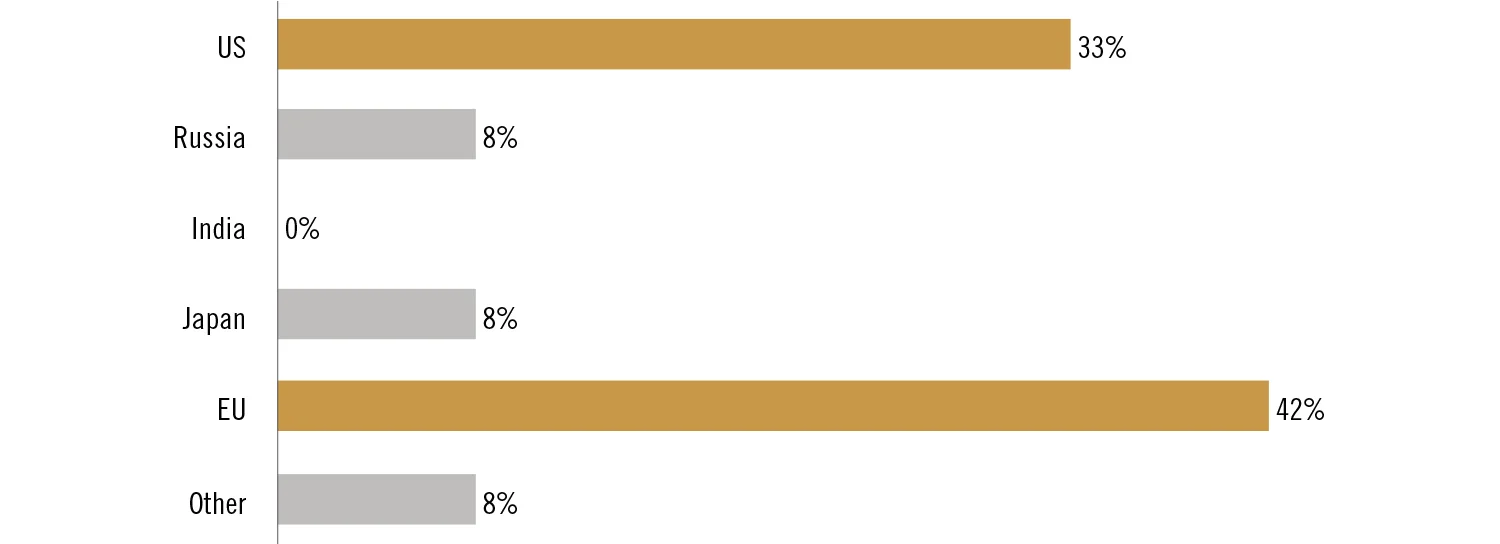
China has presented a philosophy of embracing nations engaging in the BRI. But with so many nations and vested interests involved there are bound to be tensions.
Central banks that voted in the survey believe the BRI may create greatest friction with the EU (42%) and the US (33%). This is perhaps not surprising, given the decision by EU members not to endorse part of the multi-billion dollar plan in 2017 because it did not include commitments to social and environmental sustainability and transparency. The US, meanwhile, has recently named China a “strategic competitor” and moved to impose trade sanctions on it, including restrictions on investment and tariffs on US$60 billion worth of products.
“If the [BRI] initiative does not develop in compliance with EU/US projects and policies, or does not duly take into account their economic or political concerns, the risk of friction is certainly there,” said one CEE central bank. “Considering the size and scope of current investments here, we do not see that they could create frictions [at the moment].”
“There is a possibility that the BRI could in some way conflict with EU goals, but we are strongly committed to the European integration process, while trying to have very friendly and prosperous relations with China through the BRI,” said another European central bank. “In our view, these two processes should accompany one another.”
A respondent from a Middle Eastern central bank also expects the BRI to offer a net benefit. “The BRI is expected to strengthen the economic and trade relations with our existing trading partners and create new opportunities and new economic partners,” the bank said.
“The BRI can be regarded as win-win co-operation. The initiative should be considered as an opportunity that is not intended to divide the countries,” added another European central bank.
“As far as we are concerned, we do not foresee any friction arising from the BRI with our strategic partners,” added an Asian respondent.
Despite many BRI countries in central Asia and central and eastern Europe falling within Russia’s traditional sphere of influence, there did not appear to be much concern about frictions with Russia and the Eurasian Economic Union. This may be in part due to Russia – itself already benefiting from BRI projects – appearing to embrace China’s strategic initiative.
“We are not concerned the BRI may create friction with any of the strategic partners,” explained a Eurasian central bank located within Russia’s traditional sphere of influence.
Perhaps surprisingly, no central bank predicted the BRI would cause frictions with India. One of the original Brics nations, India notably stayed away from Belt and Road Forum for International Cooperation in May 2017 in Beijing. It has also expressed its opposition to the economic corridor China is building in Pakistan, as it passes through the disputed Kashmir region controlled by Pakistan but claimed by India.
14a. Are there concerns that the BRI may pose risks to any of these areas at a national level?

The main risks the BRI could pose for their nations, as the central banks highlighted, were related to its impact on domestic funding capabilities (36%), followed by monetary policy (27%) and then financial stability (18%) – although a large number did not answer or did not see risks in the indicated areas. “We consider the BRI an opportunity that will not pose risk to the mentioned areas,” said one CEE central bank. “We do not foresee that the BRI could pose risks to the mentioned areas at a national level,” added a Southeast Asian central bank.
Central banks did not elaborate on the reasons for their concerns about domestic funding capabilities being damaged by the BRI, but they did add some details about other concerns. “Projects need to be well chosen, designed and implemented. Otherwise they can create a dangerous fiscal burden, which would then spill over to the rest of the economy – the financial sector in particular,” said one Balkans-based central bank.
Another small central bank reiterated earlier concerns about foreign-exchange funding risks. “If financing occurs in forex it jeopardises monetary policy operations,” a respondent from the central bank said. “If the projects engage in large domestic borrowing, as some of the construction contracts could be outsourced to domestic implementers, financial stability could be affected.”
15. Has your country drawn up corresponding plans to participate in the BRI?
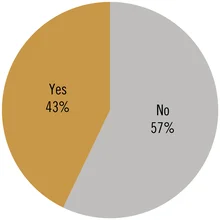
While China has moved quickly to turn the BRI into a major initiative involving some 71 territories, engagement still appears to be patchy – and the majority of central banks said their countries have yet to draw up plans to participate in the BRI.
A response from a mid-size Asian central bank sums up the view of many: “We have not drawn up corresponding plans to participate in the BRI. However, our nation has signed a memorandum of understanding with the People’s Republic of China on co-operation within the framework of the Silk Road Economic Belt and the 21st Century Maritime Silk Road Initiative.”
Another central European central bank added: “Our government adopted a directive in May 2017 in which it gave full support to the BRI and its guiding principles, but a detailed plan to participate in this initiative is still to be developed.”
One larger Middle-Eastern economy central bank said it has initiated plans for “investments of Chinese infrastructure corporations” in its country – but this has yet to be extended to the BRI more broadly.
Another central bank whose nation looks set to benefit from a major infrastructure project funded largely by the Export–Import Bank of China since 2014 said it has also signed a memorandum of understanding on the BRI in May 2017. Other nations have advanced beyond signing general memoranda of understanding on co-operation within the framework of the BRI to move towards more specific co-operation, for example, on ports and port industrial parks. This was particularly the case for some 16+1 central banks.
Only users who have a paid subscription or are part of a corporate subscription are able to print or copy content.
To access these options, along with all other subscription benefits, please contact info@centralbanking.com or view our subscription options here: subscriptions.centralbanking.com/subscribe
You are currently unable to print this content. Please contact info@centralbanking.com to find out more.
You are currently unable to copy this content. Please contact info@centralbanking.com to find out more.
Copyright Infopro Digital Limited. All rights reserved.
As outlined in our terms and conditions, https://www.infopro-digital.com/terms-and-conditions/subscriptions/ (point 2.4), printing is limited to a single copy.
If you would like to purchase additional rights please email info@centralbanking.com test test test
Copyright Infopro Digital Limited. All rights reserved.
You may share this content using our article tools. As outlined in our terms and conditions, https://www.infopro-digital.com/terms-and-conditions/subscriptions/ (clause 2.4), an Authorised User may only make one copy of the materials for their own personal use. You must also comply with the restrictions in clause 2.5.
If you would like to purchase additional rights please email info@centralbanking.com test test test







